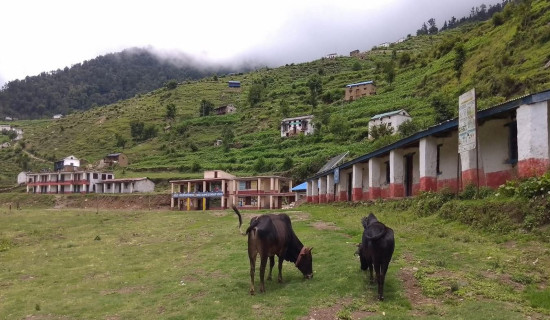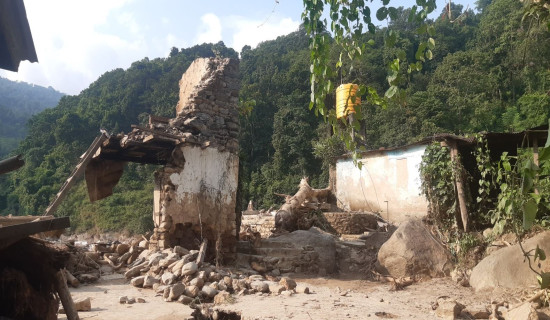- Monday, 15 December 2025
Pangolin in Nepal awaits conservation
BY HARI KOIRALA,Urlabari, Jan. 20: Kerabari Rural Municipality in north Morang has initiated a conservation campaign for pangolins (salak), a species at the brink of extinction worldwide. This rare species finds itself in a dangerous situation, as its habitat is rapidly shrinking because of human encroachment.
These unique animals are among the most trafficked mammals in the world. Pangolins are smuggled, particularly for their meat and hide from Nepal to China and Vietnam due to their perceived medicinal properties.
The indiscriminate clearing of dense forest areas in the name of the community and scientific forestry has led to the crisis of habitat for pangolins.
Until a few years ago, a significant population of pangolins used to thrive in the Chure area of North Morang. Even today, their habitat can be found in Kerabari and Miklajung Rural Municipality, as well as the Chure area of Letang Municipality.
Kumar Bahadur Bishwakarma, President of the Model Permaculture Learning Centre, engaged in local pangolin conservation, said that the primary source of the pangolin's diet comprises termites and insects.
Pangolin's meat is considered a delicacy but scales are their most prized parts. On one hand, the habitat of Pangolins is shrinking and on the other hand, the smuggling of Pangolins has increased by many folds.
Ganga Limbu, a member of the Vertical Biodiversity Fund, said that pangolins are considered farmers-friendly species as they fertilise the soil and do not harm humans in any way. Pangolins are known as farmer-friendly wildlife because they loosen the soil and increases fertility.
Two organisations named Vertical Biodiversity Fund and Model Permaculture Learning Thalo have been active in Nnorth Morang since 2017 to protect pangolins.
The National Parks and Wildlife Protection Act has placed the pangolin on the list of protected wildlife.
Out of the eight species of pangolins, two species considered rare in the world, black salak (Chinese pangolin) and copper salak (Indian pangolin) are found only in Nepal.
Of all the pangolins found in Nepal, the Chinese pangolin stands out as the only internationally endangered wild animal. Bhojraj Kafle, Chairman of the Vertical Biodiversity Fund, mentioned that the organisation is actively involved in efforts to combat poaching and smuggling of these animals. Their initiatives include treating injured pangolins, pinpointing their habitats, educating locals about the significance of these animals, and raising public awareness of their conservation.
According to Kafle, the Fund is working on pangolin conservation in Morang, Sunsari and Sankhuwasabha.
Pangolins are typically located in forests at an elevation of around 2,000 metres above sea level. They are known for their shy and sensitive nature and prefer seclusion. Their reproductive rate is notably low, as they give birth to only one offspring at a time.
The survival rate of their offspring is very low, so it is crucial to create an environment where pangolins thrive, said Bishwakarma.
Durga Prasad Kattel from Kerawari-5 Satisale said that the habitat and food sources for these insect-eating animals have shrunk.
"Simply safeguarding their habitat is insufficient, termite mounds are no longer visible in the forest. The indiscriminate intrusion of human activities has obliterated these mounds, "said Kattel.
Kerawari Rural Municipality in Morang has initiated conservation efforts in collaboration with the local community forest, following the procedures outlined in the year 2080 BS concerning pangolin conservation.
According to recent data, pangolins have been identified in 43 districts across Nepal.
















